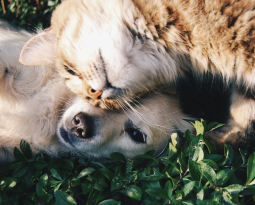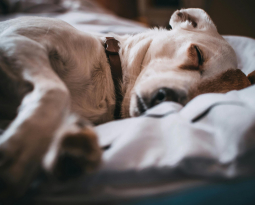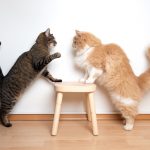We’ve talked about pet obesity before on the blog in the past, but it’s worth addressing again and again. Truly, obesity in cats and dogs is one of the most pressing health concerns for thousands of pets across the nation. In America, obesity is the most preventable disease affecting up to 35% of all cats. Over half of all cats aged 5-11 are obese. Okay, so it’s a serious problem. What can we do about it?
What is Obesity
Obesity is, simply, the presence of an excess amount of body fat. When the body fat is higher, the bodyweight is traditionally higher as well, meaning a cat who is overweight (weighing more than their ideal body weight) is likely dealing with an excess of body fat. A cat is considered ‘overweight’ when they are between 10-20% above their ideal body weight. ‘Obese’ is 20% and over That means that of cats aged 5 and over, over half of them are at least 20% heavier than their weight should be.
Why is Obesity a Problem?
Obesity is a huge problem for all creatures, it comes with a range of increased risks and troubles. Obesity on its own shortens a cat’s life, even just being overweight in a moderate amount can decrease the years your cat has ahead of them.
Obesity also brings an increased risk of:
- many types of cancer
- diabetes mellitus
- heart disease
- hypertension
- osteoarthritis and a faster degeneration of affected joints
- urinary bladder stones
- anesthetic complications as they are less heat tolerant
How do I Know if My Cat is Obese?
Before you can begin to help your cat on their health journey, you need to understand where they’re at! The easiest method for you to use is by looking at and measuring your cat’s ribs.
Rib coverage is one of the ways in which vets can accurately measure the body condition of an animal and unlike some other methods, it’s one that is easily handled by a pet owner themselves. First, you’re going to hold your hand palm down and then with your other hand, take your fingers and feel your knuckles. This is approximately how the ribs should feel just behind the shoulder blades of your cat. The scale vets use for measuring body weight and body condition is a 1-5 or 1-9 scoring chart, but 5/5 (or 9/9) isn’t the best/highest score! Here’s what the 1-5 chart looks for as an example.
1 / 5
A cat scoring a 1 / 5 on the body conditioning chart has:
- No body fat
- Ribs and backbone visible from a distance (on short-haired cats)
2 / 5
A cat scoring a 2 / 5 on the body conditioning chart has:
- When viewed from above there is an obvious waist
- Ribs may be visible and are easily felt
3 / 5
A cat scoring a 3 / 5 on the body conditioning chart has:
- When viewed from above there is an obvious waist
- Ribs can be felt with no excess fat
4 / 5
A cat scoring a 4 / 5 on the body conditioning chart has:
- Ribs can be felt but there may be difficult and a moderate layer of fat
- The abdomen shows obvious rounding
5 / 5
A cat scoring a 5 / 5 on the body conditioning chart has:
- Ribs cannot be felt (due to a heavy layer of fat)
- Obvious abdominal distension.
As you can see from this, a 1 out of 5 isn’t the worst, nor is 5 out of 5 the best. It’s more a scale from underweight to overweight, you want to land in the middle at a healthy weight, for the 5 scales 3 is normal.
So How Do I Help My Cat?
You’ve identified that your cat is obese so now what? Its time to look at the two things recommended to every person who needs to lose weight: diet and exercise!
It can be tough to get your cat to stick to an exercise regime (after all, they don’t understand the need for crunches) but by playing with them more every day you can start giving them more activity and thus more exercise. If you are a little understocked on toys, think about picking up some more active ones, or treat puzzles that keep your pet’s mind working as well as their paws.
When it comes to diet it can be difficult to switch your cat over to a better eating schedule. It might take a change-up in feeding times or they may need a different type of food entirely. Don’t know about your experience, but pets can be picky! So don’t get discouraged, take your time figuring out exactly what they need and will accept.
No matter what, you want to make sure you involve your vet! It’s possible your pet’s obesity is tied to some other underlying causes or they could have developed other diseases and problems while being obese. Work with your vet to ensure your pet’s path back to health is a safe and effective one!







